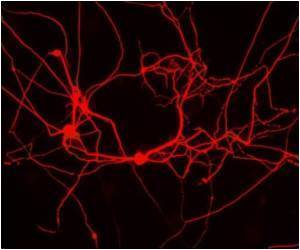An unknown mechanism that establishes polarity in developing nerve cells was discovered by the University of Arizona scientists. Understanding how nerve cells make connections is an important step in developing cures for nerve damage resulting from spinal cord injuries or neurodegenerative diseases such as Alzheimer's.
In a study published on Aug. 12 in the journal
Proceedings of the National Academy of Sciences, UA doctoral student Sara Parker and her adviser, assistant professor of cellular and molecular medicine Sourav Ghosh, report that the decision which will be the "plus" and the "minus" end in a newborn nerve cell is made by a long and a short version of the same signaling molecule.
Nerve cells – or neurons – differ from many other cells by their highly asymmetric shape: Vaguely resembling a tree, a neuron has one long, trunk-like extension ending in a tuft of root-like bristles. This is called the axon. From the opposite end of the cell body sprout branch-like structures known as dendrites. By connecting the "branches" of their dendrites to the "root tips" of other neurons' axons, nerve cells form networks, which can be as simple as the few connections involved in the knee-jerk reflex or as complex as those in the human brain.
Source-Eurekalert











